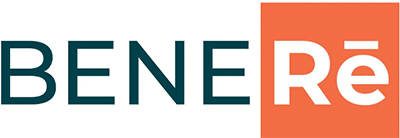The concept of Skee-Ball, a classic arcade game, offers an insightful analogy for understanding the pitfalls of certain voluntary benefits programs. Just as players can overspend on Skee-Ball to accumulate tickets for meager prizes, employees can end up overpaying for voluntary benefits, often without employers realizing it. Let’s break down this analogy and explore strategies to avoid the “Insurance Skee-Ball” scenario.
Key Takeaways
- Skee-Ball and certain voluntary benefits programs share a common dynamic: individuals contribute significant sums with high commissions, only to find limited value in the end.
- Lack of transparency in claims processing and pricing structures can lead to employees paying more than the benefits are worth.
- BeneRe offers a different approach, prioritizing transparency and reinvestment of excess premiums into employee benefits.
Understanding the Insurance Skee-Ball Phenomenon
Skee-Ball, the quintessential arcade game, epitomizes the redemption game model. Players invest money to earn tickets by rolling balls into point buckets, eventually redeeming them for prizes. However, the value received often doesn’t align with the amount spent, reminiscent of certain voluntary benefits programs where employees contribute hefty premiums with unclear returns.
In these programs, high commission structures (often referred to as “heaped”) create a currency that employers use to pay for services, but often at inflated prices. Employees unknowingly participate in this game, lacking transparency about where their money goes and what it truly buys. Accident, Critical Illness and Hospital Indemnity policies are often laden with commissions as high as 70% in a heaped environment. This lack of clarity, coupled with commission-driven incentives, can lead to significant overcharges for benefits.
When an employer has, say, 50% turnover in the company every year, half of the policies pay exceedingly high commissions year after year, but the price is baked into the price for all employees. The insurance company is forced to charge higher prices for policies with lesser coverage to make the math work. In this game, unfortunately, the long-term loyal employees are overcharged for the value received year after year.
Preventing the Insurance Skee-Ball Game
To avoid falling into the Insurance Skee-Ball trap, employers must prioritize transparency and fair pricing in their benefits programs. Heaped commission structures, common in many voluntary benefits setups, incentivize brokers to prioritize initial payouts over long-term value. This cycle perpetuates inflated costs and prevents employees from realizing the true purpose of their benefits – financial security through paid claims.
Embracing technology and decision support tools can empower employees to make informed choices about their benefits without feeling pressured by sales-driven counselors. Additionally, remote work trends and technological advancements make it easier to educate employees and streamline benefits administration.
BeneRe’s Transparent Approach
BeneRe stands apart by offering a transparent and efficient alternative to traditional voluntary benefits programs. By eliminating excessive commissions and prioritizing reinvestment of premiums into employee benefits, BeneRe ensures that policy coverage improves, costs decrease, and employees receive tangible benefits from their contributions.
Don’t let your employees play the Insurance Skee-Ball game. Prioritize transparency, fair pricing, and efficient benefits administration to ensure that employees receive the value they deserve from their voluntary benefits. With BeneRe’s innovative approach, you can break free from the cycle of overpayment and empower your workforce with meaningful coverage.
For more information on BeneRe’s group captive insurance program and a complimentary financial analysis of your current programs, reach out today.
